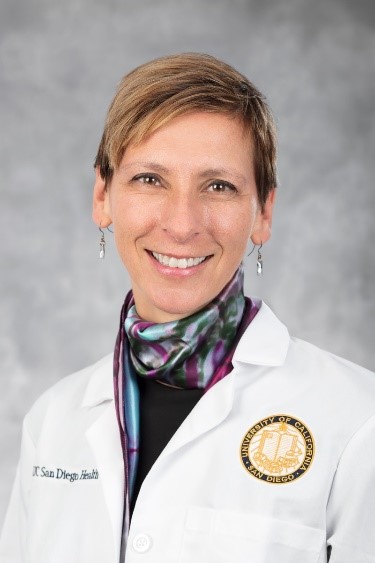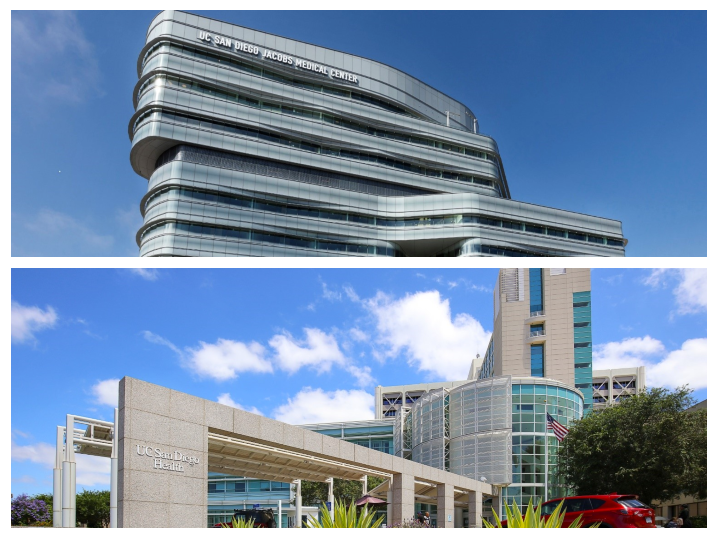By Amy Sitapati, Brian Clay, and Marlene Millen. Thanks in no small part to digitization, medicine today is much different than the medicine of yesterday. Plenty has already been written about how electronic health record (EHR) systems amplify the time, clicks, and silos of our electronic healthcare workflows (see the latest example by Atul Gawande in The New Yorker).
What is important to remember is that an EHR system is, first and foremost, a tool essential for our patients’ care. In fact, data from UC San Diego Health’s Epic EHR system shows that our patients access the system more often every week and every month than do our own providers and staff.
Certainly, there is room for improvement in our EHRs. Yet the efficiency EHRs offer for improving access to health information and enhancing the communication between clinicians, patients, and their care is unprecedented.
Realizing this, we believe some doctors really do love their computers. Here are our own reasons – both as primary care doctors and as doctors working in the hospital setting – why we do:
| The Primary Care Physician | The Hospital Physician |
| 1. When my patient is admitted to an outside hospital, not only am I notified and have access to the record of their care, I can also check electronically to see how my patient is doing via a web portal.
2. When I am on-call, I don’t need to lug around my laptop. I can open the phone app and see my patient’s record, medications, list of allergies, and more. I can respond immediately from wherever I am. 3. As imaging is performed, I don’t need to keep a list in a notebook for each order (my old method), I can just wait for the report to come into my inbox. 4. I can care for 100 patients in a day – most virtually for between-care visits. 5. When specialist coordination is needed for complex-care decisions, I can reach out electronically for advice and get a response in a day or two. 6. When patients are lost to follow-up, I can find them in the system and send a reminder to schedule an appointment with me. 7. When the patient has medications prescribed by another provider, I can see the dose and name easily (especially, when the patient can’t remember) – and keep her safe from harmful interactions. 8. Instead of sifting through piles of faxed records for new patients (which are often incomplete), I can just read the notes and target key images and lab values pertinent to their health. 9. I can sign scheduled meds from anywhere, and the patient can arrive at the pharmacy without traveling to pick up a paper that I wet-signed. 10. I can place 1,000 orders in one click! |
1. I have background information on patients being admitted, both from our Emergency Department and from home/clinic. No more “blank slate” admissions without a good chunk of the pertinent data being present.
2. I can write a note or an order when the patient is off getting a study in Radiology. I couldn’t do that when we were on paper. Also, there’s no longer a time delay between writing a paper order/flagging chart and when the unit secretary takes the order off. Much more efficient! 3. Ditto other clinical areas, such as UC San Diego Health’s Heart Station, Interventional Radiology, and more 4. Tests pending at hospital discharge get sent to me when the results are available. That was a manual process in the past. 5. Admission orders take a fraction of the time they used to. Standard work allows for efficient order sets. 6. I can be incredibly precise with timing of medication orders or lab draws. We used to have to write it down and hope for the best if we intended something unusual. 7. Notes and labs and secure messaging on mobile apps! 8. Interoperability is a game changer! I haven’t called an outside medical records department in quite a while. 9. No more handwritten discharge instructions. That was a colossal pain. 10. Thank goodness for electronic prescribing of controlled substances. So long, security prescription forms! |
 Dr. Amy Sitapati is an internist and Chief Medical Information Officer of Population Health, UC San Diego Health.
Dr. Amy Sitapati is an internist and Chief Medical Information Officer of Population Health, UC San Diego Health.
 Dr. Brian Clay is a hospitalist and Chief Medical Information Officer – Inpatient and Hospital Affiliations, UC San Diego Health.
Dr. Brian Clay is a hospitalist and Chief Medical Information Officer – Inpatient and Hospital Affiliations, UC San Diego Health.
 Dr. Marlene Millen is a primary care physician and Chief Medical Information Officer of Ambulatory Care, UC San Diego Health.
Dr. Marlene Millen is a primary care physician and Chief Medical Information Officer of Ambulatory Care, UC San Diego Health.

